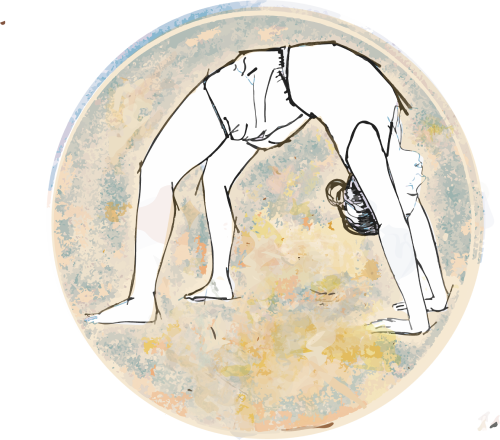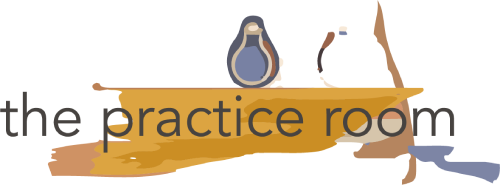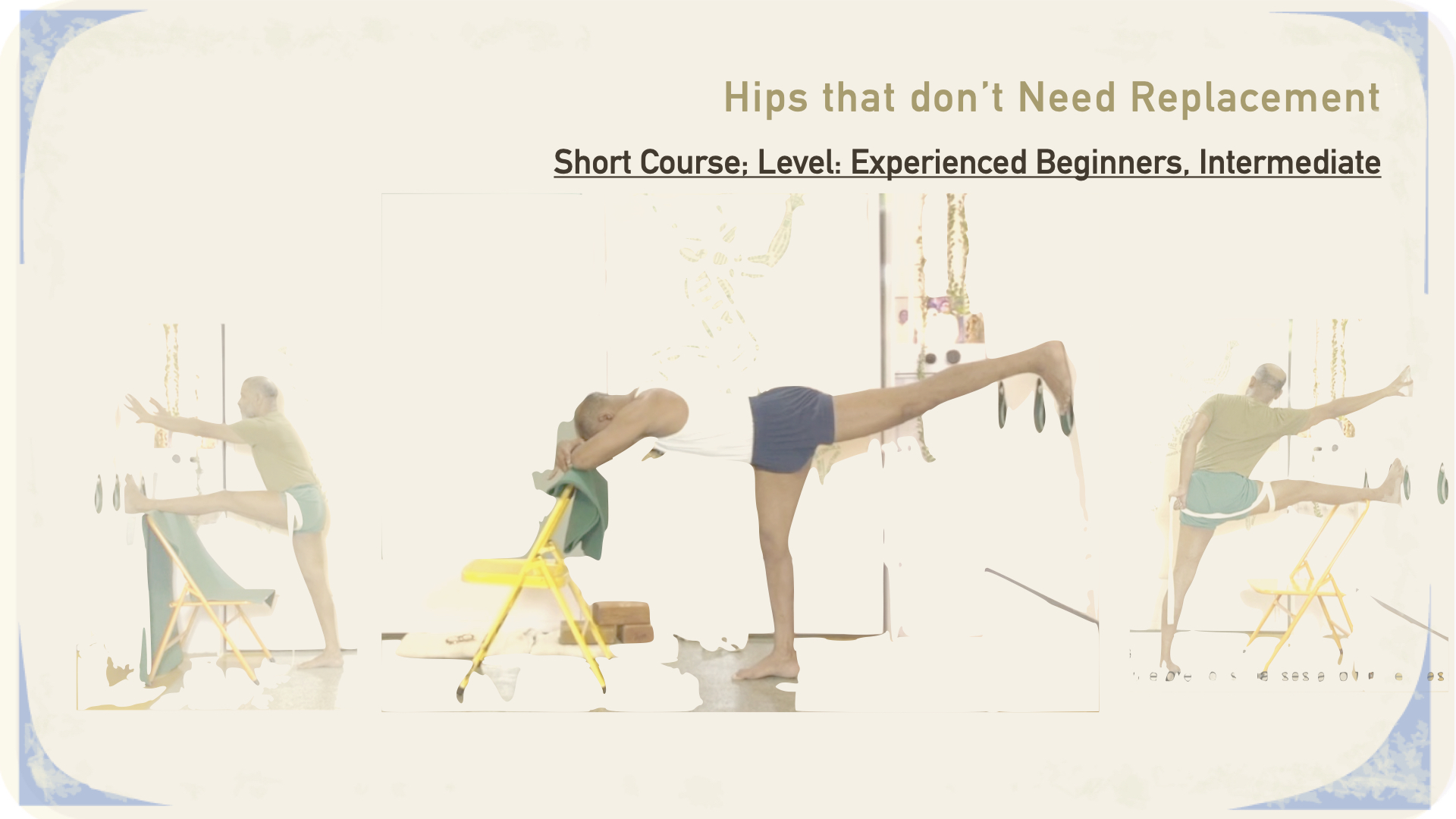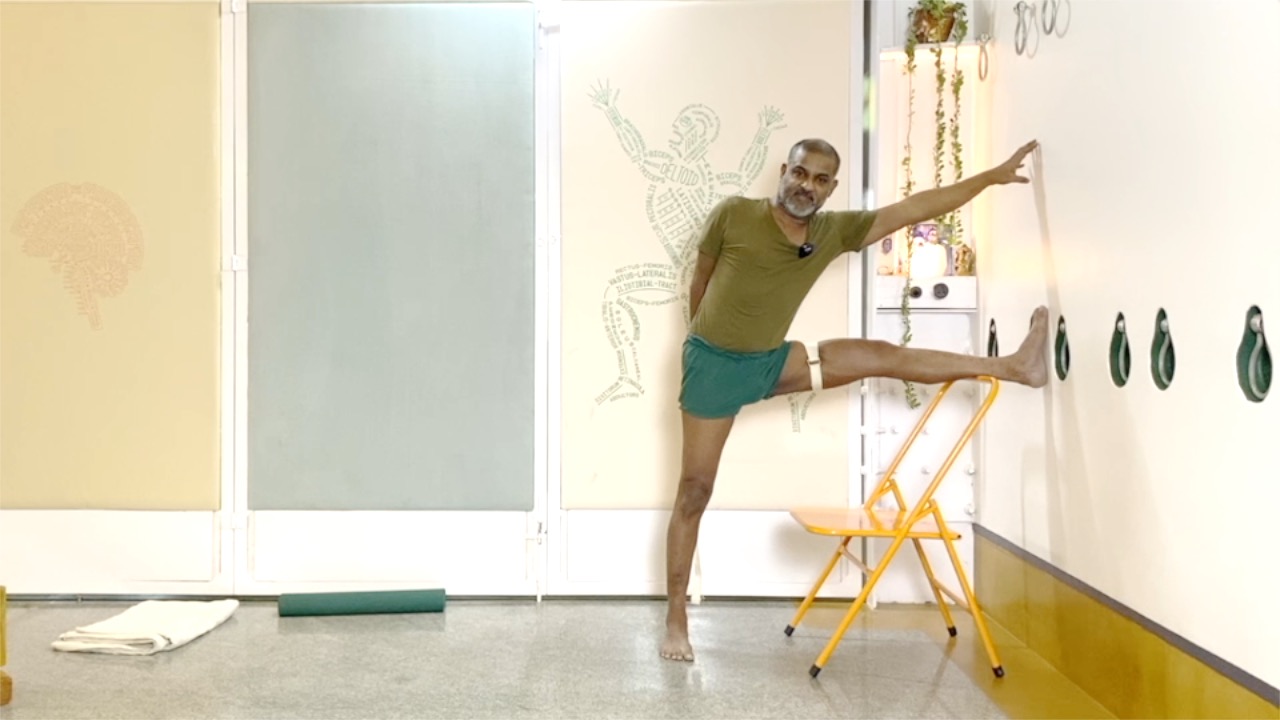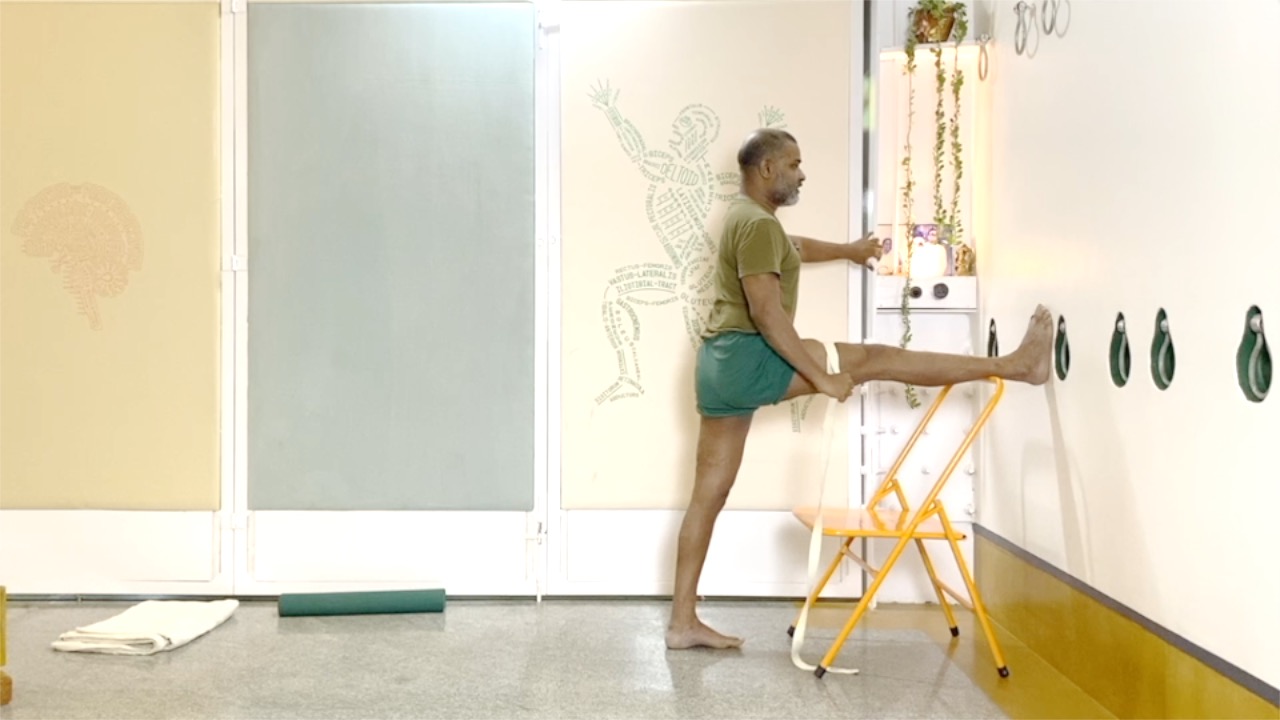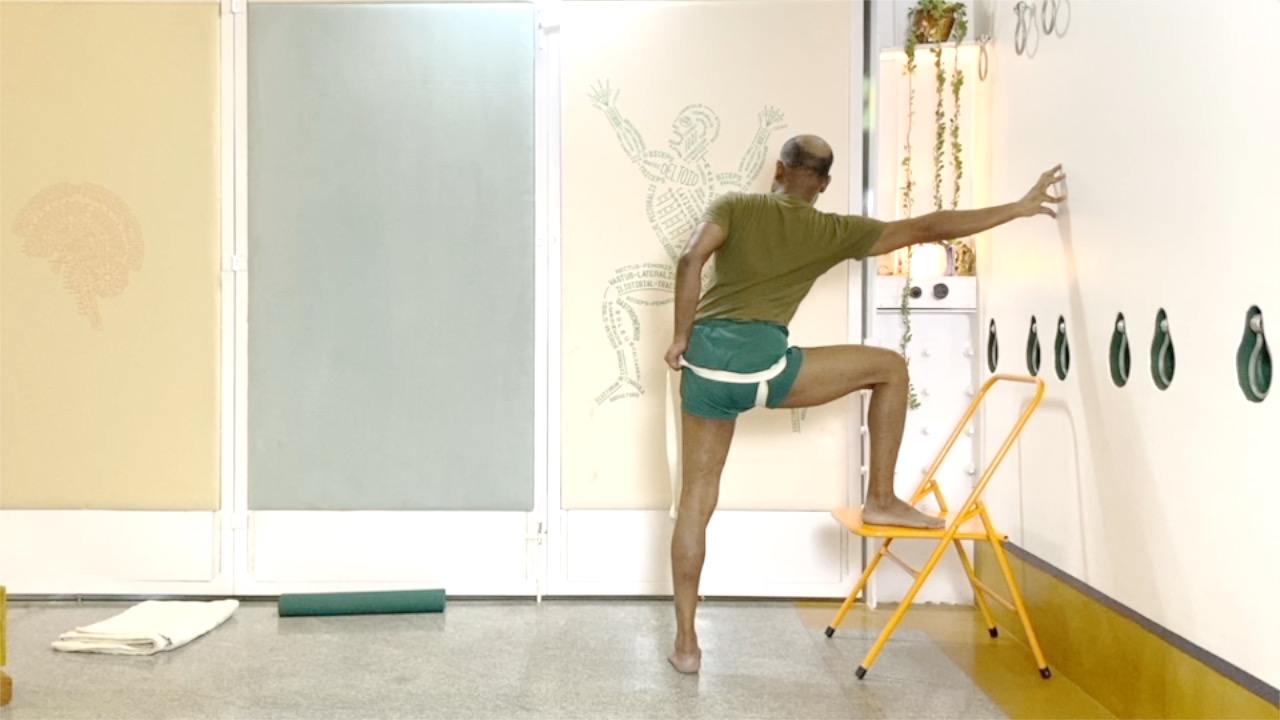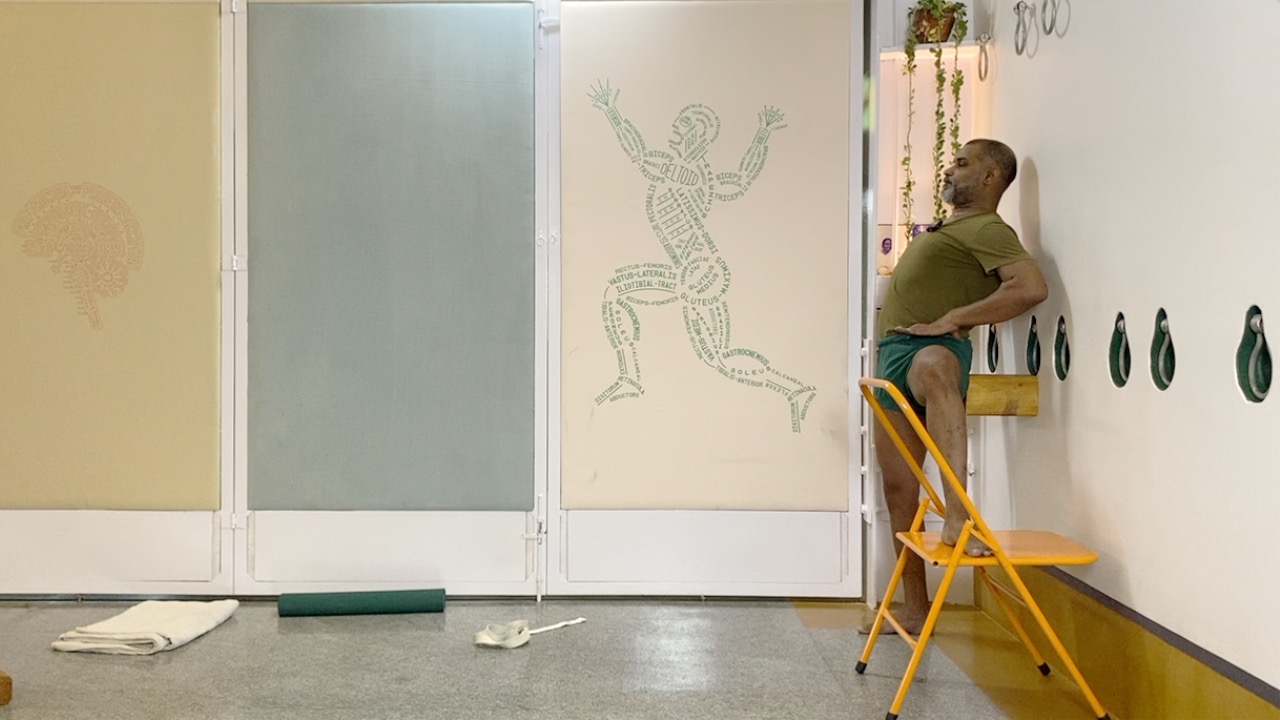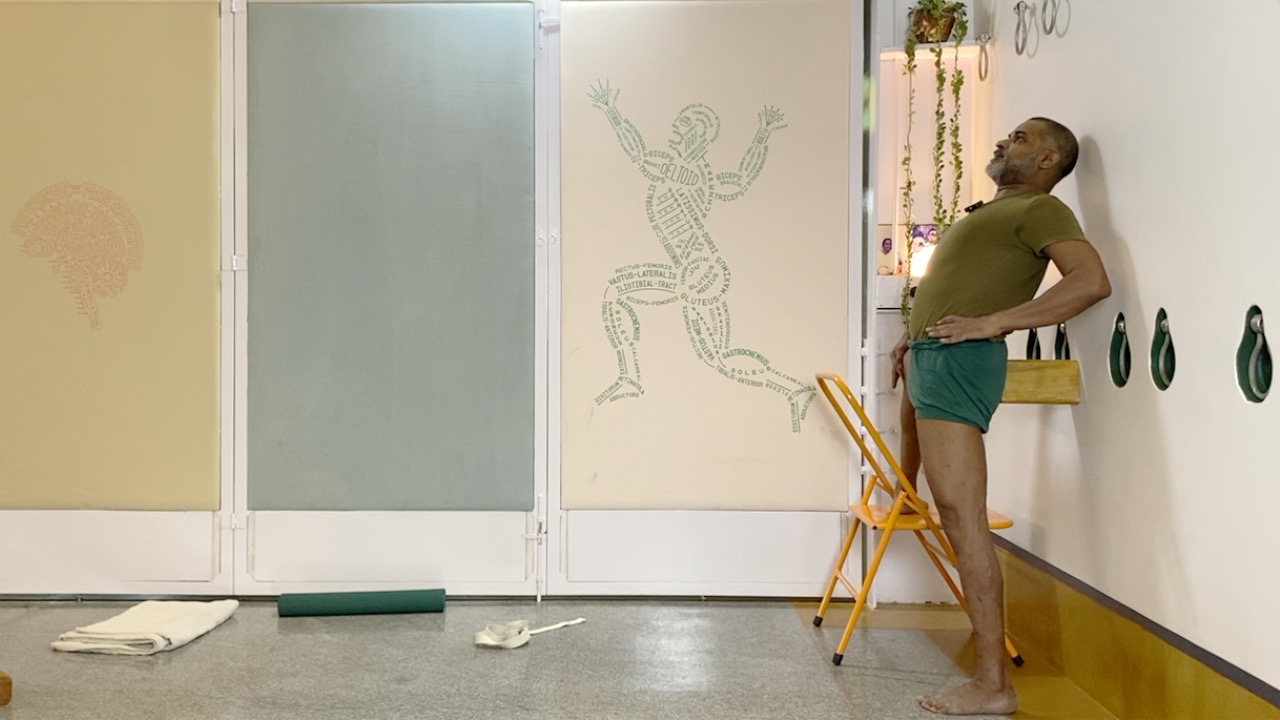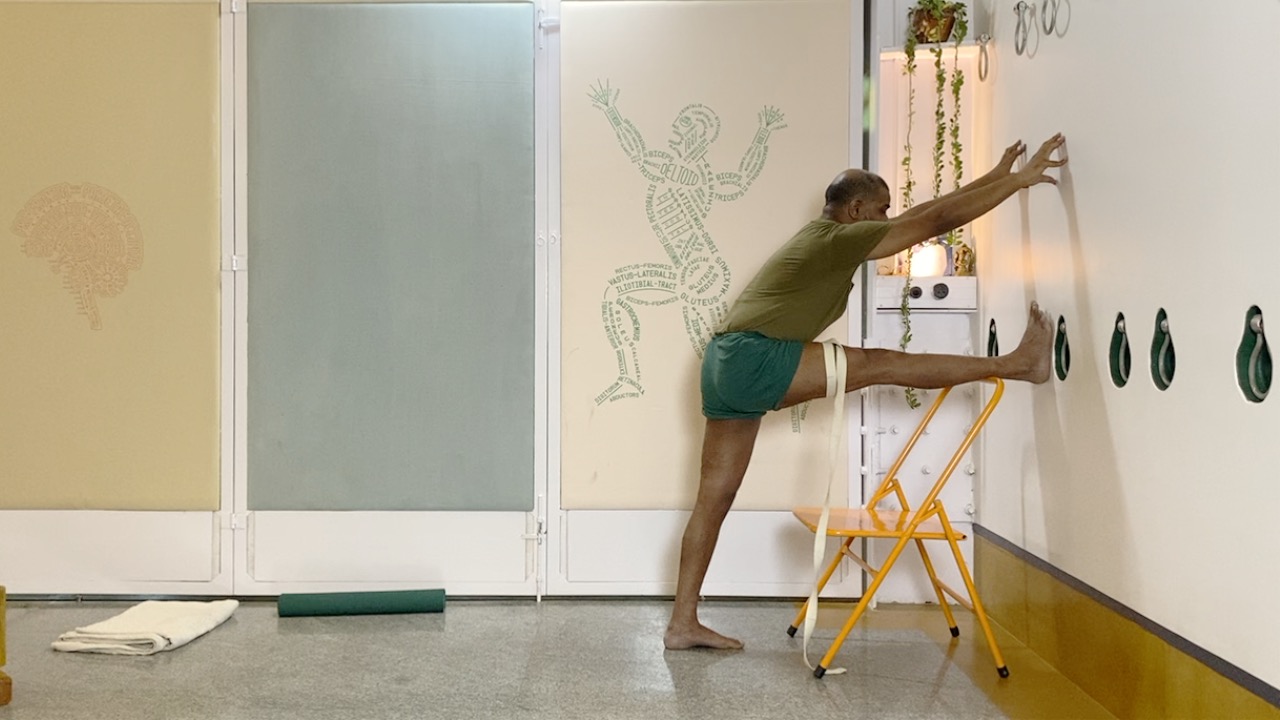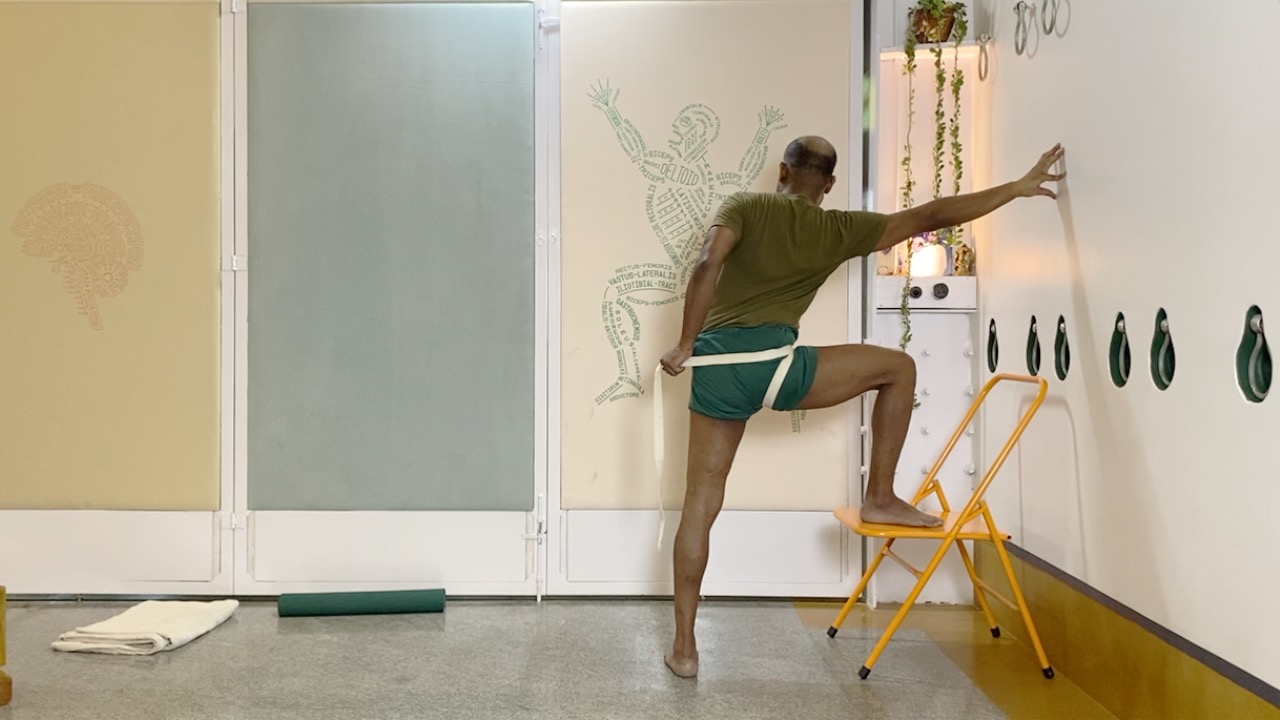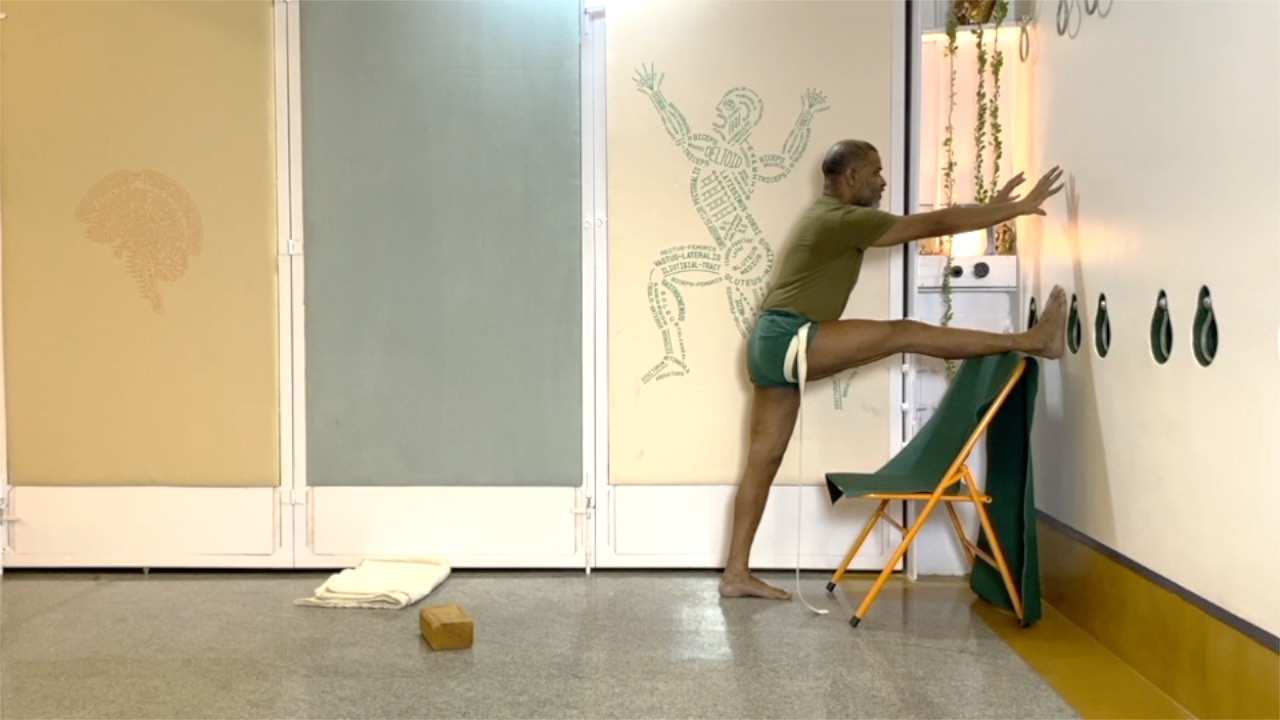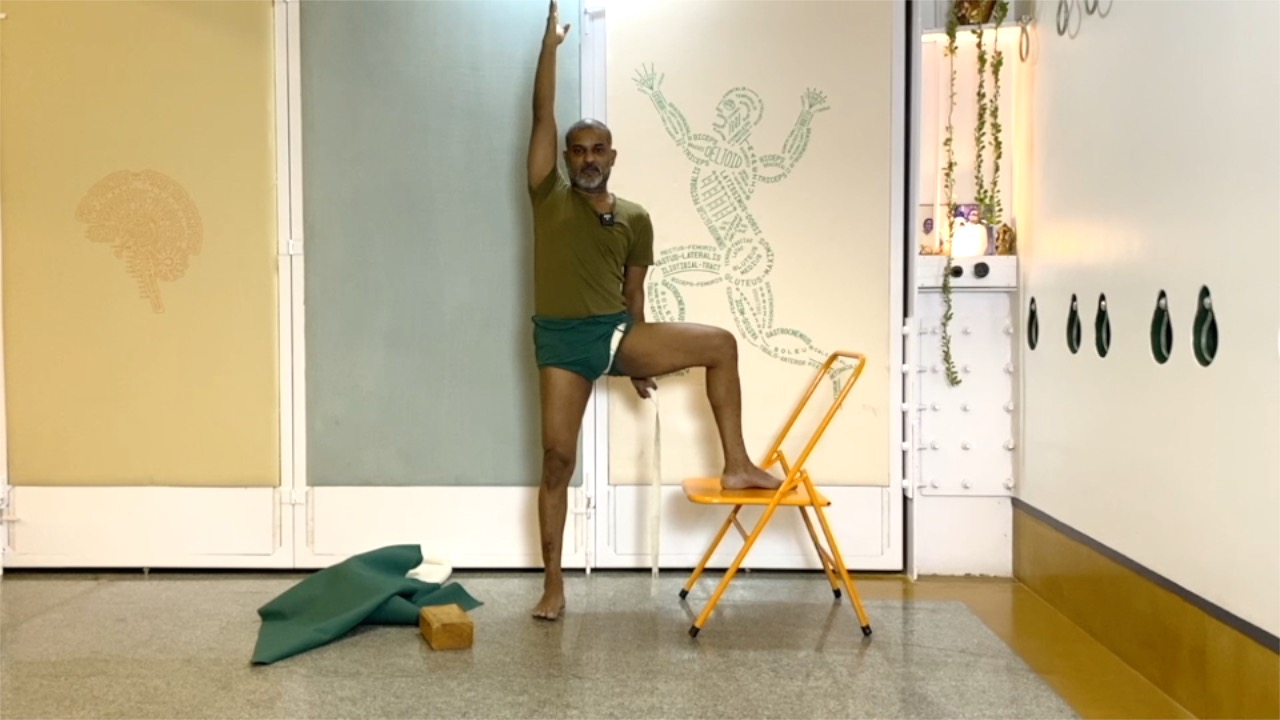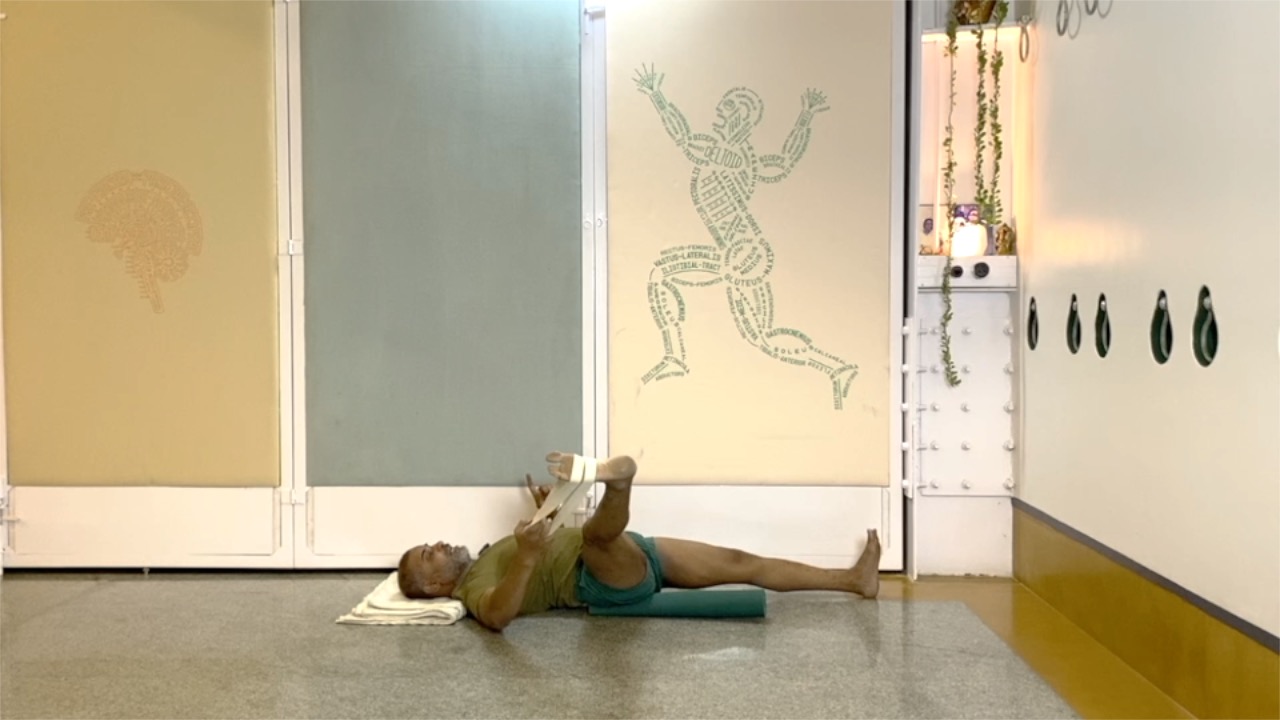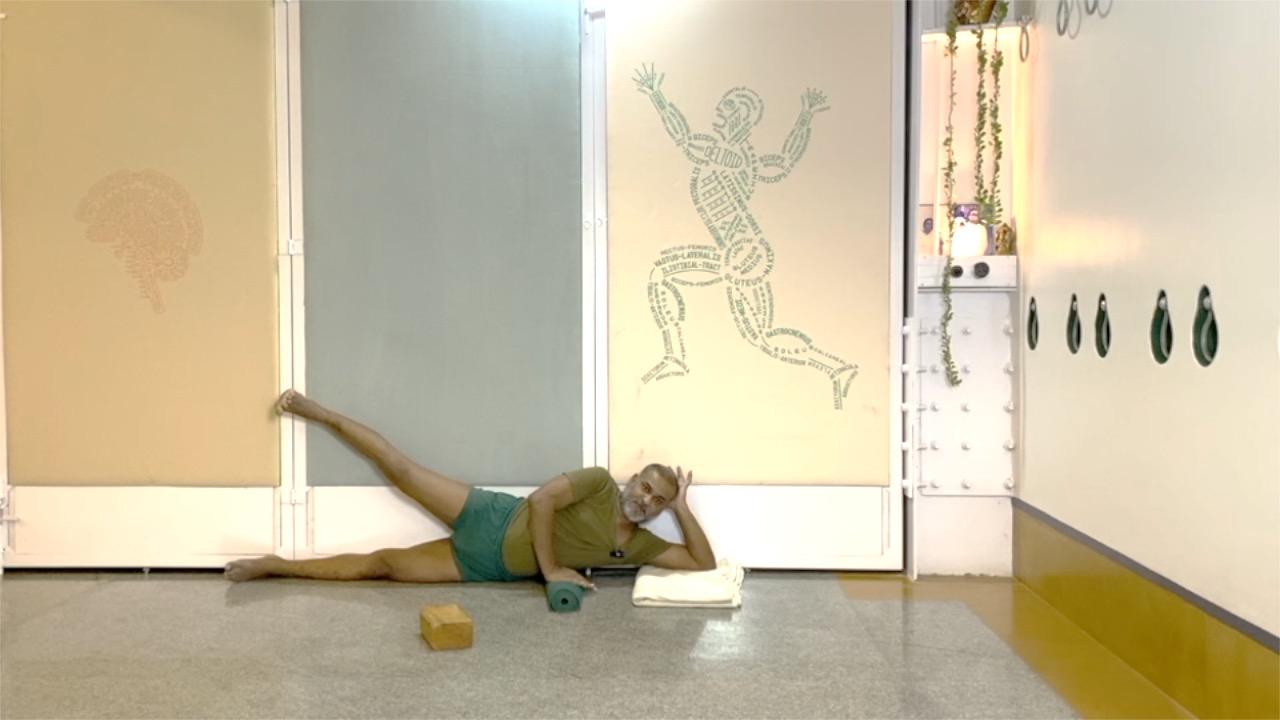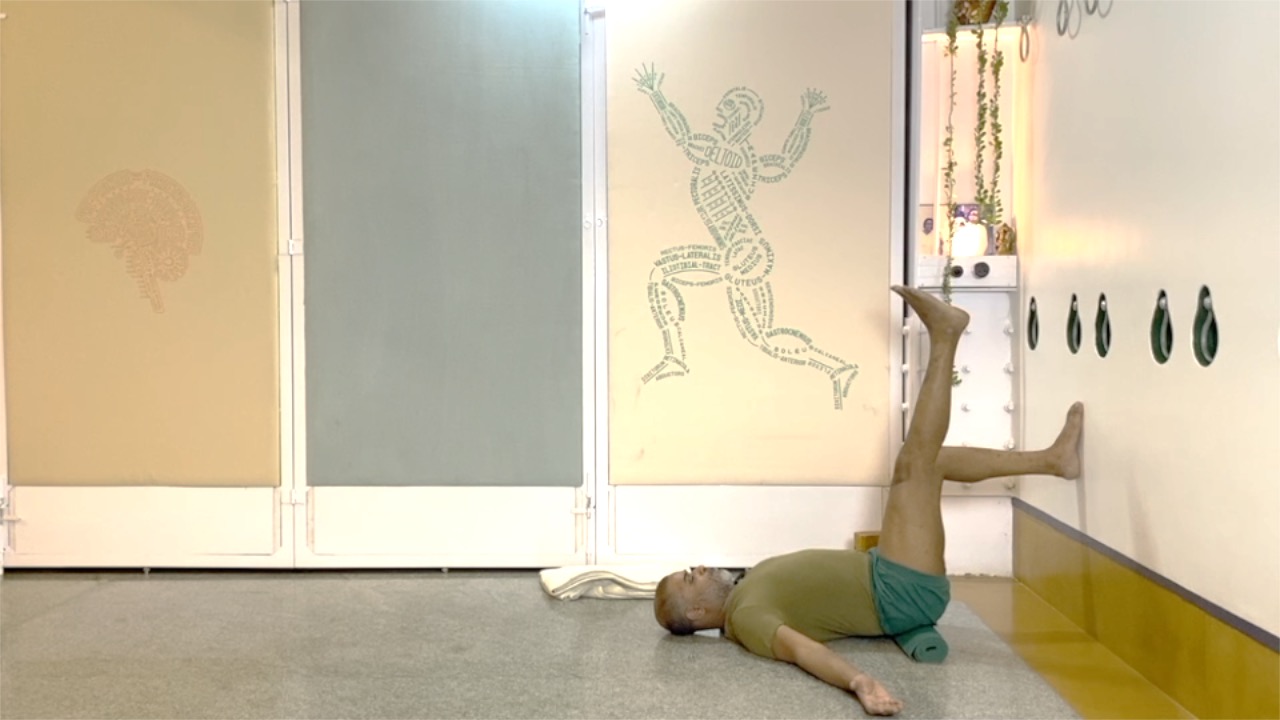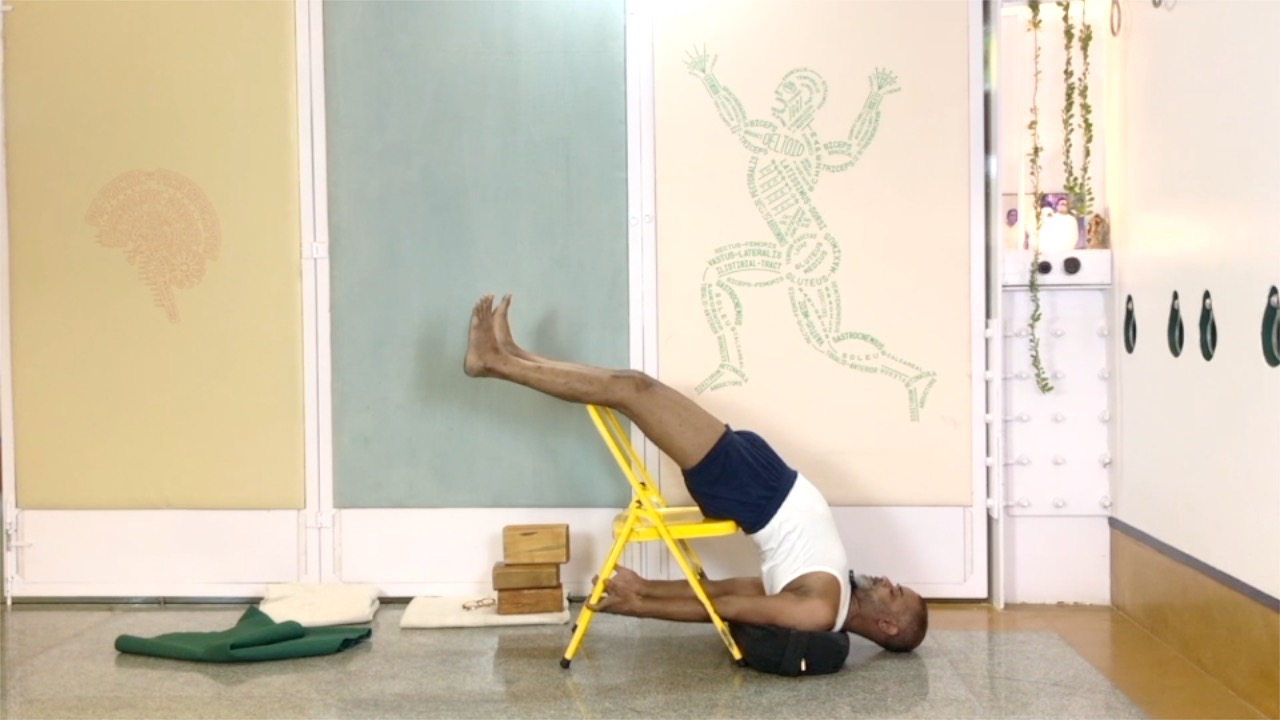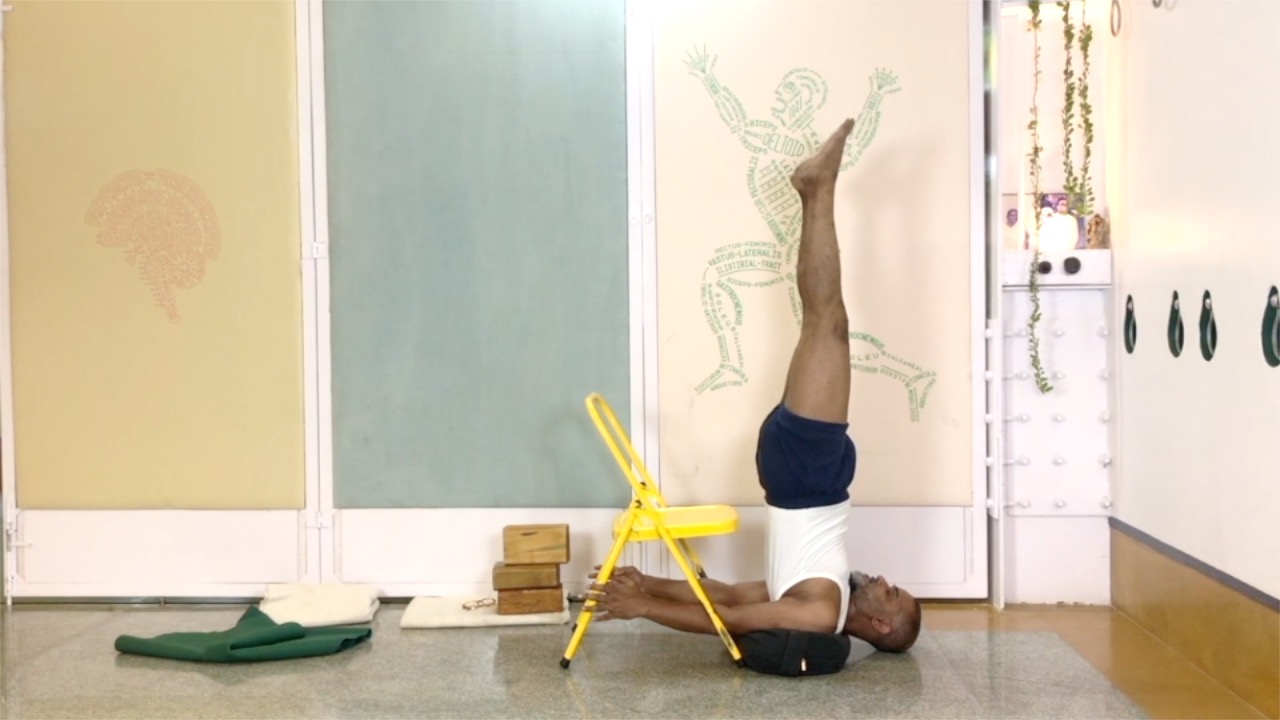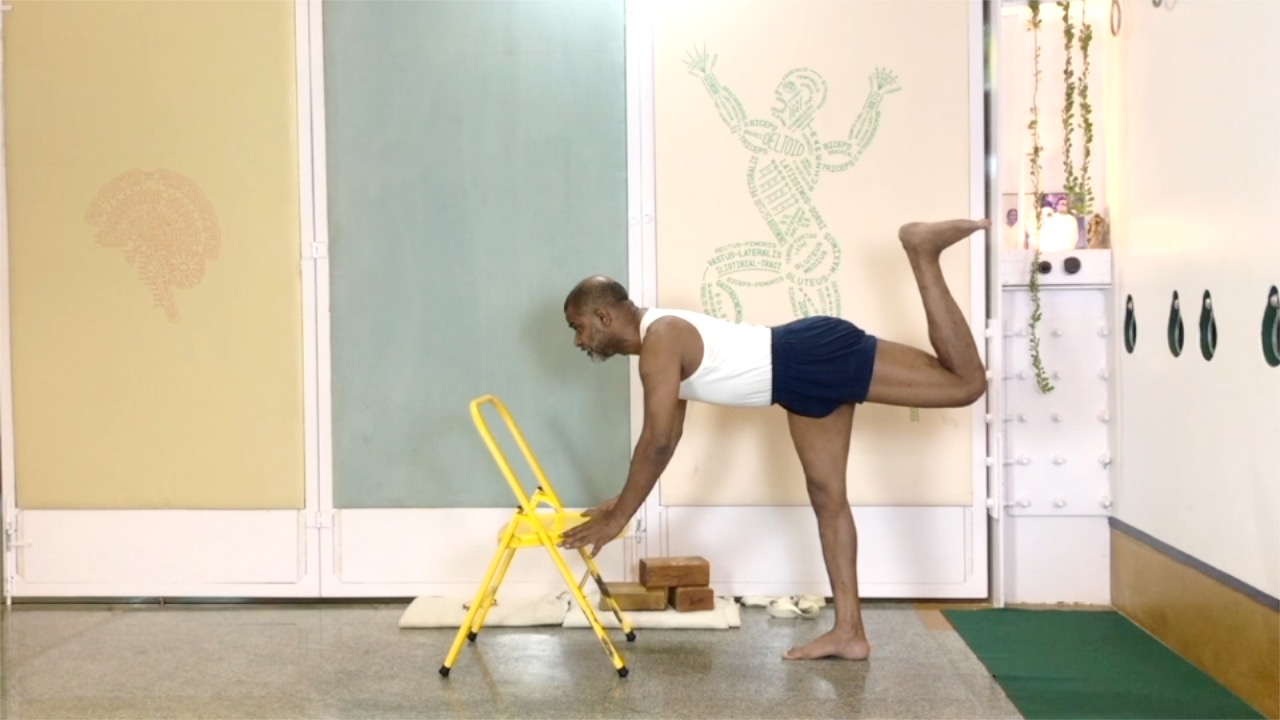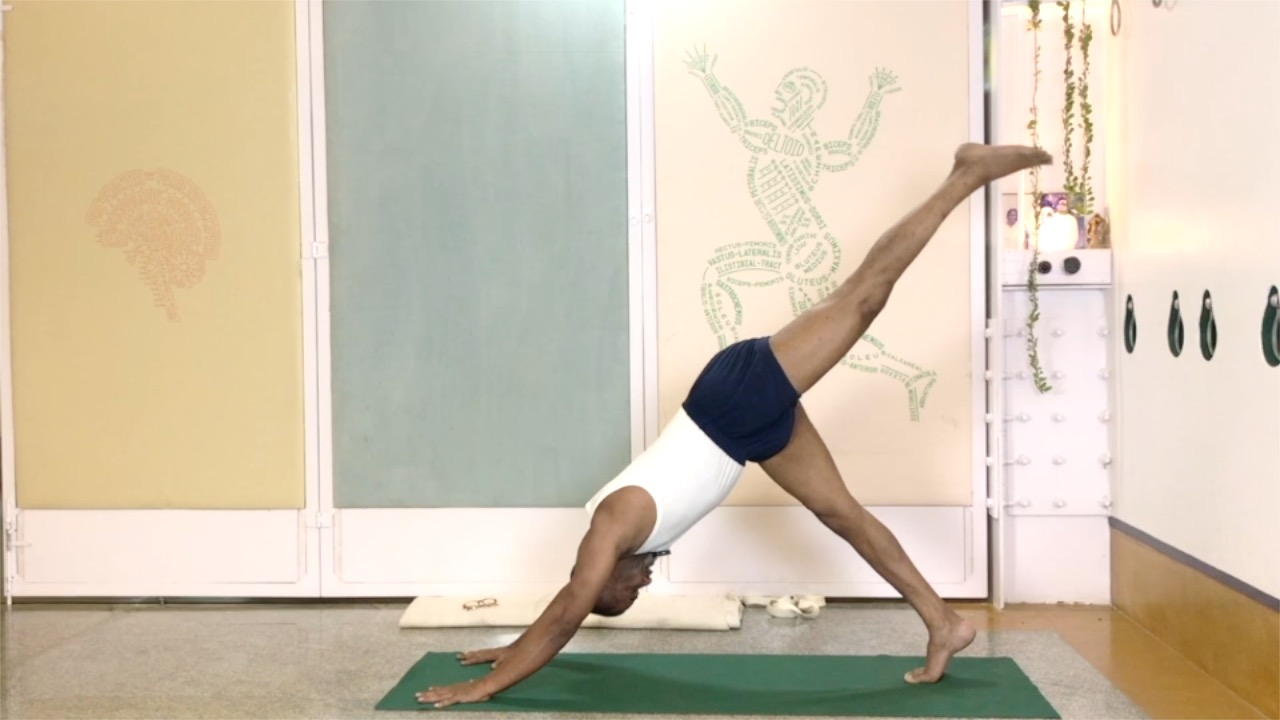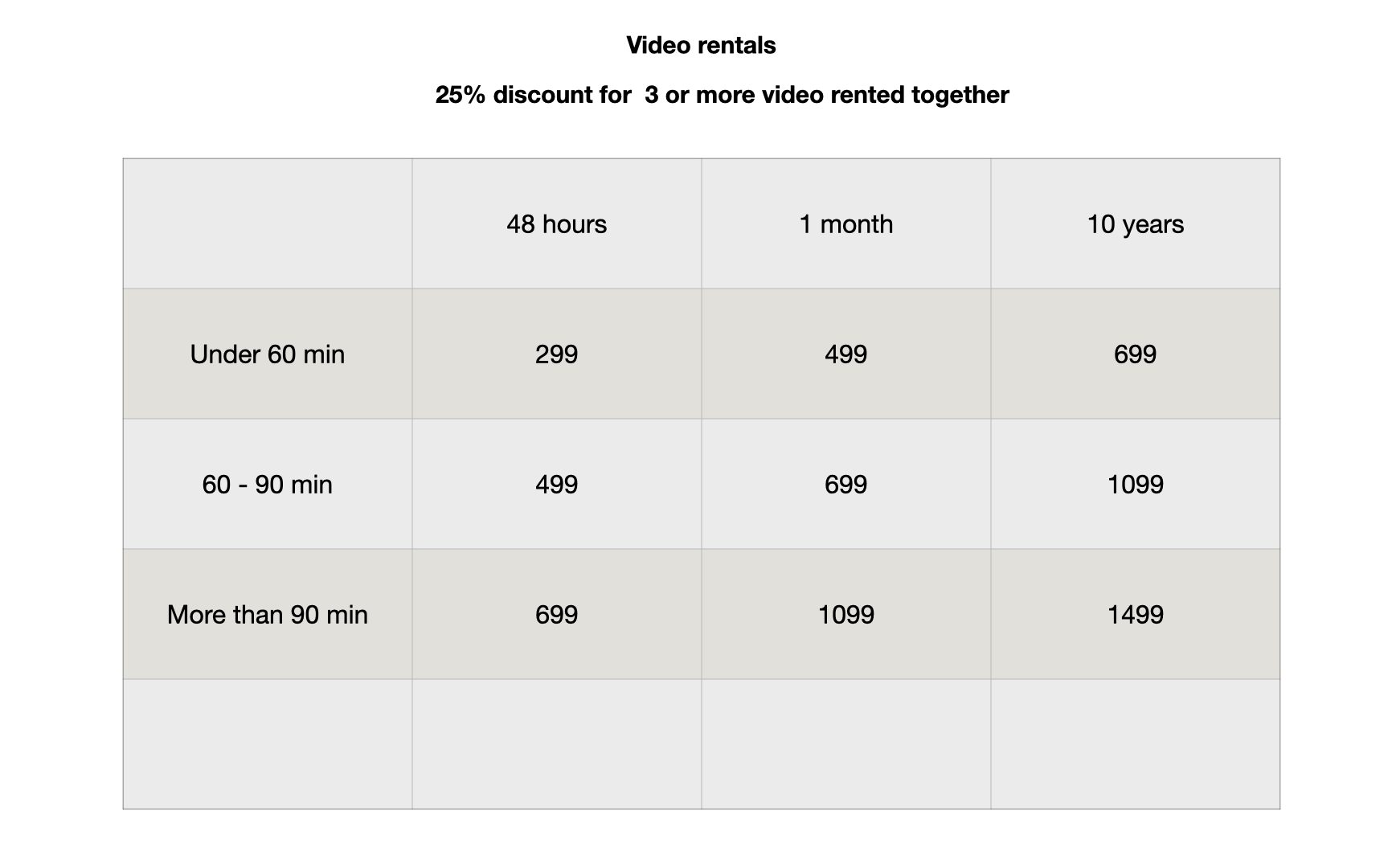The hip/ pelvis area houses our strongest bones, the largest muscles (The thigh bone is called a femur bone and not only is it the strongest bone in the body, it is also the longest) . This area can generate immense power, or it can become immensely dull: the hip joint may become stiff, and the surrounding muscles may become weak.
The thigh bones connect to the hips at the ‘hip joint’ (the acetabulum). At the skeletal level, this is the primary connection between the bones of the lower limb and the upper body. The hip joint is a ‘ball and socket’ type joint, which makes possible movements a large range of movements in various axes. Through disuse, stiffness and weakness sets in. This can restrict our activities from a mild to a severe degree. Hip replacements are becoming more common over the years as our range of movements at the hips becomes more and more restricted.
A healthy hip is both flexible (i.e. it has mobility) and also firm. This session gives an overview of both perspectives. It alerts us also to the full range of movements at the hips – the outer corners of our abilities which we tend to lose if we dont make use of them. An overview session ending in a supported inversion.
In these 3 sessions we learn to activate the thigh muscles and muscles of the lower back to stabilise and energise the hip, as well externally rotating the thigh in order to “fix’ the thigh bone into the hip socket. All these actions make the hip joint firm, increase mobility, and safeguard against degeneration of the hips..
Learning to activate the thigh and the muscles of the lower back simultaneously is one of the few actions to keep the hip healthy.
Part: Firm and Mobile Hips – an Overview

